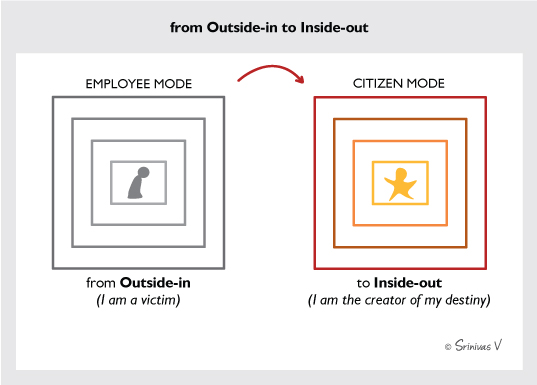There are two fundamental states in which we seem to engage with our work environment – the employee mode and the citizen mode.
The employee mode is an “outside-in” state, characterized by powerlessness, deep attitude of complaining and a sense of unfulfilled potential.
The citizen mode is an “inside-out” state, characterized by a positive sense of contribution, deep engagement with colleagues, customers, the organization itself, and the recognition that organization offers an extraordinary platform for personal and social growth.
What are the factors that enable/ disable the shift from “outside-in” to “inside-out”?
The first factor affecting this shift is ‘commitment’.
Commitment comes out of human choice; it cannot be bought from anyone. One has to give commitment. This leads to inside-out behavior.
The second important factor is that of ‘creating and nurturing relationships’.
The essence of relationships lies in fair-play and transparency. The more there is transparency; the better is the working relationship. On the other hand, the moment there is game-playing and manipulation, outside-in behavior starts manifesting itself.
The third factor in this journey is the necessity of a ‘success orientation’.
This refers to the desire to face challenges head-on and ‘make things happen’. If one is constantly in a state of “this cannot be done”, obviously one becomes a victim of life around oneself. The more one can ‘make things happen’ the more one becomes in charge of things, and can shift towards an inside-out behavior.
The fourth and most critical factor is that of ‘purpose’.
This refers to whether we as individuals are willing to give ourselves up provided there is a purpose worth giving up to.



